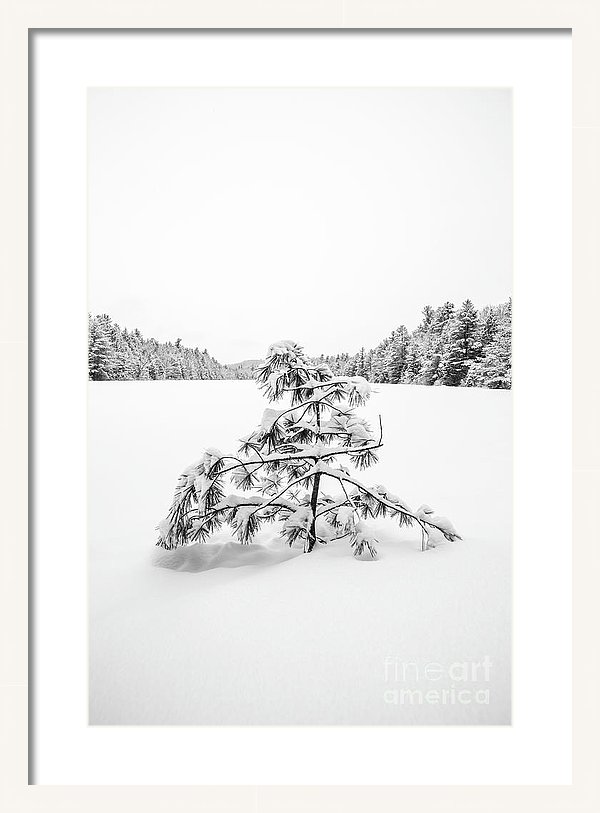The winter landscape is perfect for finding minimalist subjects such as the small lone pine tree on a frozen lake in Grantham, New Hampshire. Black and white imagery also works well as the stark overcast skies become white as well as the ground covered in snow.
A pine is any conifer in the genus Pinus, /ˈpiːnuːs/,[1] of the family Pinaceae. Pinus is the sole genus in the subfamily Pinoideae. Pine trees are one of the most varied and widely spread genus of native tree species in North America. From the cold mountains of Alaska to Nova Scotia in the east, from high wind-swept Rocky Mountain cliffs to the fertile Appalachian forests, on seaside borders, swamps, dry foothills, lowlands and everywhere in between, pine trees can be found.
Adapted to so many environments, pine trees are hardy survivors in their native habitat. The pine trees of North America were used by Native Americans for treatments of respiratory ailments, in canoe building and even as food. Today native pines are one of the most valuable commercial timber sources and continue to be used for construction, furniture, pulpwood, land management and more.
There really aren’t a lot of colors around in the winter landscape anyway except for the muted shades of green in the pine trees or the occasional shock of red from a classic old vintage farm tractor or red classic New England barn.
